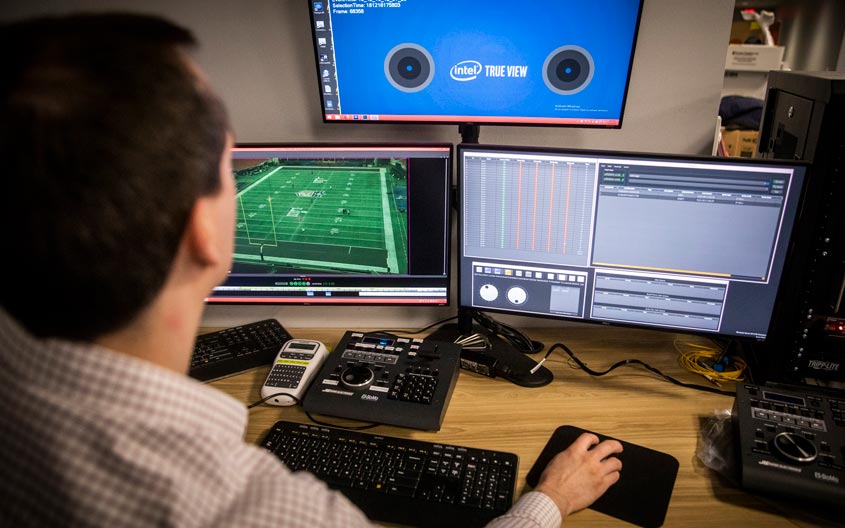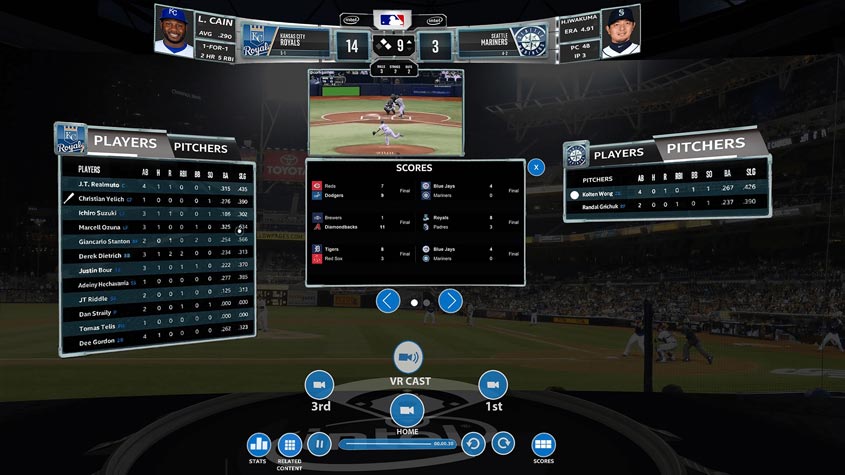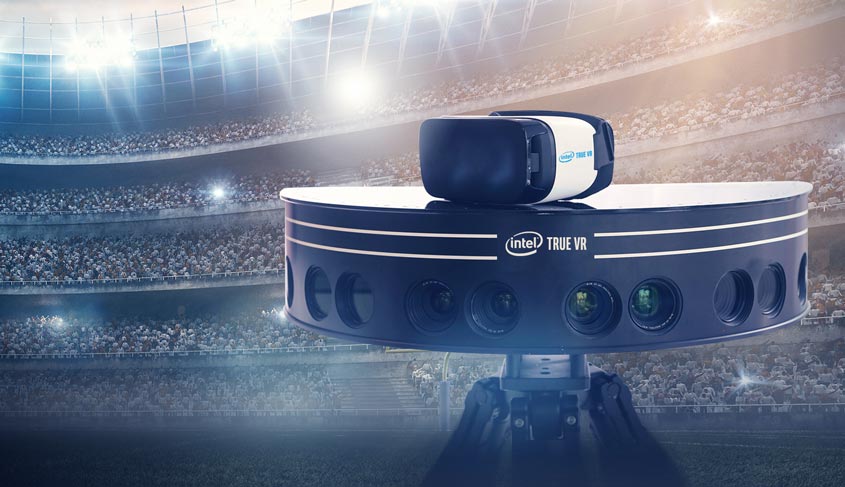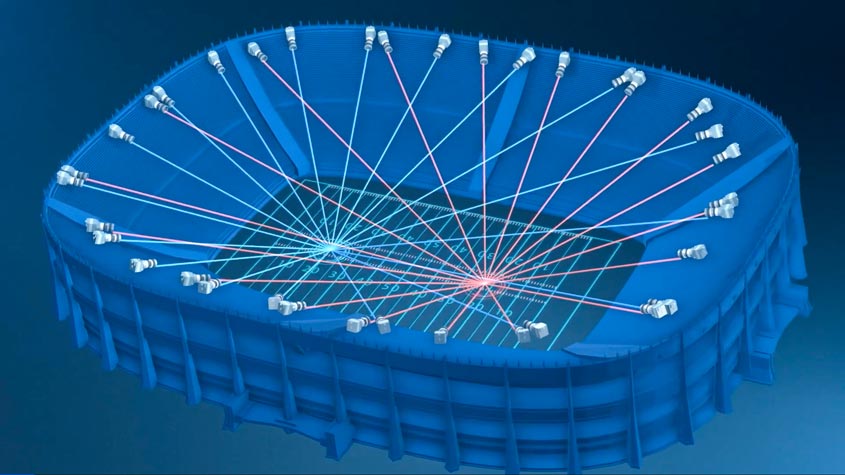By James Carwana, General Manager Intel Sports, Vice President of Intel Capital, Santa Clara, California, United States
The evolution of the fan experience within the sports industry is well under way. For the last several decades, technology has brought enhancements to the game itself, but the fan experience hasn't changed significantly. Historically, there has been one version of the game or play delivered to fans.

enhance the way fans experience sports, notes James Carwana,
General Manager of Intel Sports (Photo: Courtesy of Intel Corp.).
When innovations are introduced, the fan is able to see more views and get access to more data, ultimately resulting in a more customized experience. Take, for example, the iconic yellow line in American football. The first down marker changed the way fans viewed the National Football League (NFL) in the United States so profoundly that it’s hard to imagine a time when there wasn’t a yellow line. That technology went on to win an Emmy award.
Immersive media technology continues to create more opportunities for sports teams and leagues to put the fan first. Technology promises to completely revolutionize every aspect of sports – from athlete performance and the fan experience to the business and operational successes of major leagues and sporting events. This includes:
- delivering enhanced at-home and in-person experiences to give fans more control of the way they view content;
- providing broadcasters with the ability to share a new level of insight into the game and new ways to tell the story;
- empowering sports organizations to maximize their success on and off the field by boosting their strategic insights and game-day experiences.
Pushing the boundaries of possibility
Intel is at the forefront of pushing the boundaries of what is possible through our cutting-edge designs, features, and capabilities. Our core technologies in volumetric video capture and processing, expertise in immersive productions for live sports, and Intel’s unmatched data processing capabilities, will enable new immersive experiences across all forms of entertainment, including sports, film, television and music.
Technology promises to completely revolutionize every aspect of sports – from athlete performance and the fan experience to the business and operational successes of major leagues and sporting events.
Intel protects the intellectual property (IP) at the heart of these innovations through its robust patent program. While the immersive media patent applications currently represent a small portion of Intel’s portfolio, which comprises roughly 90,000 patents and patent applications worldwide, Intel believes these patents will punch above their weight class in view of the revolutionary nature of our technologies in this space. IP and its protection remain critical to Intel’s business, and patents are an important part of that protection. We support a strong patent system that generates high quality patents, which means robust examination systems and even post examination systems, such as Inter Partes Reviews in the United States, to allow efficient checks on initial patent quality. The focus on technological advancements coupled with shifting consumer behaviors and expectations is creating a perfect storm of opportunity for the entire sports industry.

The fan experience
Fans want to watch games on their own terms. They expect to be able to watch anything, anytime, on any screen. Intel’s focus is on giving fans the experience they want across all platforms: mobile, virtual reality (VR), computer (PC) and more. Getting the full experience often means watching on multiple screens simultaneously. Eighty percent of sports viewers say they use a computer or smartphone while watching live sports on TV. They use the devices to search for player stats, live scores, message other fans, and watch related videos. Shifting consumer behaviors, such as engagement on new media platforms (e.g. YouTube), more solo viewing of content, and mobile engagement are driving the evolution.
Fan engagement is a key component for all players in the sports ecosystem and Intel Sports focuses on bringing fans along the journey on game day – allowing users to control the experience from the front row, on the sidelines and even from the player’s perspective. Immersive media technologies are creating new ways to experience sports: immersive highlights, VR, augmented reality (AR) and more within a live broadcast, online or in social media.
Immersive media technology continues to create more opportunities for sports teams and leagues to put the fan first.
The next generation of how fans enjoy sports will be more than simply watching a passive view of the game – it will be interactive, immersive, personalized and focused on social interactions. As new technologies evolve, the experiences we create are designed to adapt and grow along with what fans and the industry want to see. We believe that we have reached a point where this nexus between sports and technology is ripe for innovation.

The role of technology
Fans want to be more involved and have more interactive, personalized and data-rich environments to speed up the supply of content and enrich the experience. Creating this flexibility is a very data-intensive process.
Today, we are seeing an accelerated pace of investment in sports technology, from major sports brands to start ups and early seed companies. The next few years will drive the future of how sports content is captured, consumed and distributed – and this will change the ways the games are delivered to the fans in significant ways.
Cloud technologies are getting better. 5G is on the horizon. Modern stadiums are increasingly smart and connected. The delivery technologies around the corner are faster. All of these opportunities, alone and in combination, create valuable IP.
Today, when we create immersive content, we are capturing video from dozens of cameras and processing the video through dozens of servers on premise or in the cloud to produce it. Intel’s investment in the cloud will result in a cloud-based solution that allows us to drive computations from a remote location, thus lowering latency and increasing efficiency and cost effectiveness.
5G will transform industries from all business sectors, including sports. Intel has implemented a series of strategically positioned cameras in NFL stadiums that capture volumetric data to create unique, 360-degree and 3D game action highlights. Each stadium is equipped with 38 5K ultra-high-definition cameras and Intel Core processors to crunch up to 1 terabyte of data per 15 to 30-second clip. The introduction of 5G will reduce latency and create efficiencies in the content delivery from the stadium to the fan sitting at home watching the game on his or her mobile device.


Vision of the future
We see three development areas on the horizon. The first is the speed at which we can generate immersive content. We are working to increase exponentially our time to delivery in 2019 and 2020. This immersive media workload produces data at a rate of three terabytes per minute, a volume of data that Intel is well equipped to process. Eventually, we will be able to generate volumetric video in near real-time.
The second area is dynamic player and ball tracking. This is an important feature in sports because it opens up a window of opportunity allowing fans to watch the game from viewpoints that were previously unavailable. For example, a fan could watch the game from the perspective of basketball superstar LeBron James as he is about to dunk and then change views to give the perspective of the defender.
The third area is the content delivery mechanism, which may range from a mobile phone to a tablet/PC to a head-mounted display (HMD). Development of user interfaces to deliver the game to the fans in an instinctive manner is going to be important as fans get accustomed to this emerging technology.

